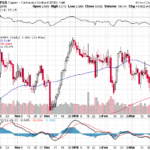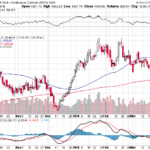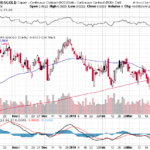We are all horrified and saddened by the ordeal of Jennifer Riordan, the Southwest Airlines passenger who was nearly sucked out of the airplane and later passed away after the plane blew an engine, spewing parts that struck open the window next to Ms. Riordan. Kudos to the brave passengers and crew that tried to help her and to the pilot who somehow landed the plane without additional deaths. It is the worst nightmare of any of us who fly.

Metaphor
If you fly, I’m sure that you think about something like this happening to you. Do you also think about the same thing happening to you and your investment portfolio, your life savings, in a metaphorical sense? That something bad will happen completely out of your control which causes rapid decompression in the financial markets and your life savings get sucked out the window? Your savings are gone, poof! Sucked out of the fuselage of your life journey.
Safeguards
Fortunately, unless you make some really poor choices, like putting all of your life savings into something very risky, your investment portfolio will not suffer the same fate. Markets can drop quickly – the 1,000+ point drop in the DJIA on February 5 was a case in point – but even that was only 4%, and markets have somewhat stabilized since then. The poor choice that would have resulted in your portfolio being sucked out the window then was being extremely short the VIX Volatility Index. No able financial advisor would have recommended going all-in on the short-the-VIX strategy. Old enough to remember the 22% drop on October 19, 1987? If your seatbelt was strapped on, you were able to ride that short-term turbulence and recover your losses from that day in short order.
My point is that the stock (or bond) market doesn’t experience rapid decompression to zero. It does take some time, and you can take steps while it happens to make sure you can land your aircraft and live to fight another day.
Further
Carrying the metaphor even further, what else can you learn from the SWA Flight 1380 ordeal?
- Don’t Sit in the Window Seat: This is not at all a criticism of poor Ms. Riordan. She did not do anything wrong. However, the window passenger is the first to get sucked out if the window blows out. Metaphorically, don’t position your portfolio to get sucked out if something really bad happens. For instance, don’t put all of your savings into the stock of one company. What if you wake up one day and you find out that company was a fraud, or did something illegal? I guess Enron comes to mind, as does Madoff. Don’t be 100% leveraged to one company. Diversify among asset classes and among brokerage and bank accounts.
- Keep your Seat Buckled: Ms. Riordan was buckled in but she got sucked out anyhow. If you and your portfolio are “buckled in”, along for the ride and on the journey for the long haul, you will be better able to ride out turbulence, even turbulence that claims some victims.
- Fly with an Experienced Pilot: An experienced financial advisor that has been through turbulence and knows what to do when you hit a few bumps can help guide you to land safely. If for no reason other than to get a second opinion as to your potential vulnerability in the event of rapid decompression in the markets, do yourself and your portfolio a favor and contact me or your trusted advisor. It will help you with your peace of mind.






